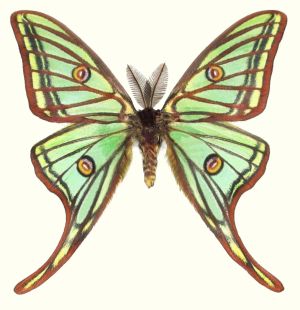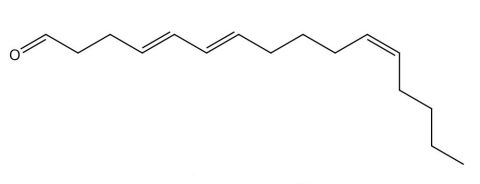Newly available Pherobank product, pheromone lure for Actias isabellae

Actias isabellae
Synonym: Graellsia isabellae
English: Spanish moon moth
Spanish: Mariposa isabelina
French: Bombyx isabelle
The protected moth Graellsia isabellae (Graells 1849) (Lepidoptera: Saturniidae) is one of the most emblematic European insects. Because of its large size, attractive wing patterns, and restricted geographical distribution, it has become a symbol for several entomological and conservation organizations.
The moth is native to Spain and France. They live high up in the Alps and the Pyrenees, where climates are generally cooler and drier. Interestingly, they have been found in Switzerland, where they are not native but instead probably further generations of captive moths. They are relics originating from the ice age or beyond. It is thought that their habitat is a refuge location. This means that for the past few millions of years, while the climate of Europe has drastically changed, the conditions in the small areas in the Alps and Pyrenees have remained stable, and never changed, allowing the small remnant populations of this moth to survive for thousands of years in these small habitats.
Larvae hatch from their eggs after 1 to 1.5 weeks and begin to eat the very hard pine needles (Pinus nigra and Pinus sylvestris). It takes about a month and a half for the caterpillars to reach the final instar. In the last instar, the caterpillars descend from the tree to pupate under the leaves on the ground. At this stage, the pupae hibernate in the cocoon until the following spring. Moths emerge from the cocoon after hibernation in late April / early May.
The pheromone of Actias isabellae has been identified in 2010 by the group of professor Jocelyn G. Millar* as the single component (E,E,Z)-4,6,11-hexadecatrienal.
Our chemists have synthesized the pheromone and ready-for-use lures are now available from Pherobank.
For more information about this insect please see:
https://gd.eppo.int/taxon/ACTIIS
- Actias isabellae pheromone lure, Pherobank article #: 50477
- only available as pheromone lures
Please note: Actias isabellae is protected by the Habitats Directive “Natura 2000”.
* Millar, J.G. et al. 2010. Identification of the sex pheromone of a protected species, the Spanish moon moth Graellsia isabellae. J. Chem. Ecol. 36, 923-932


